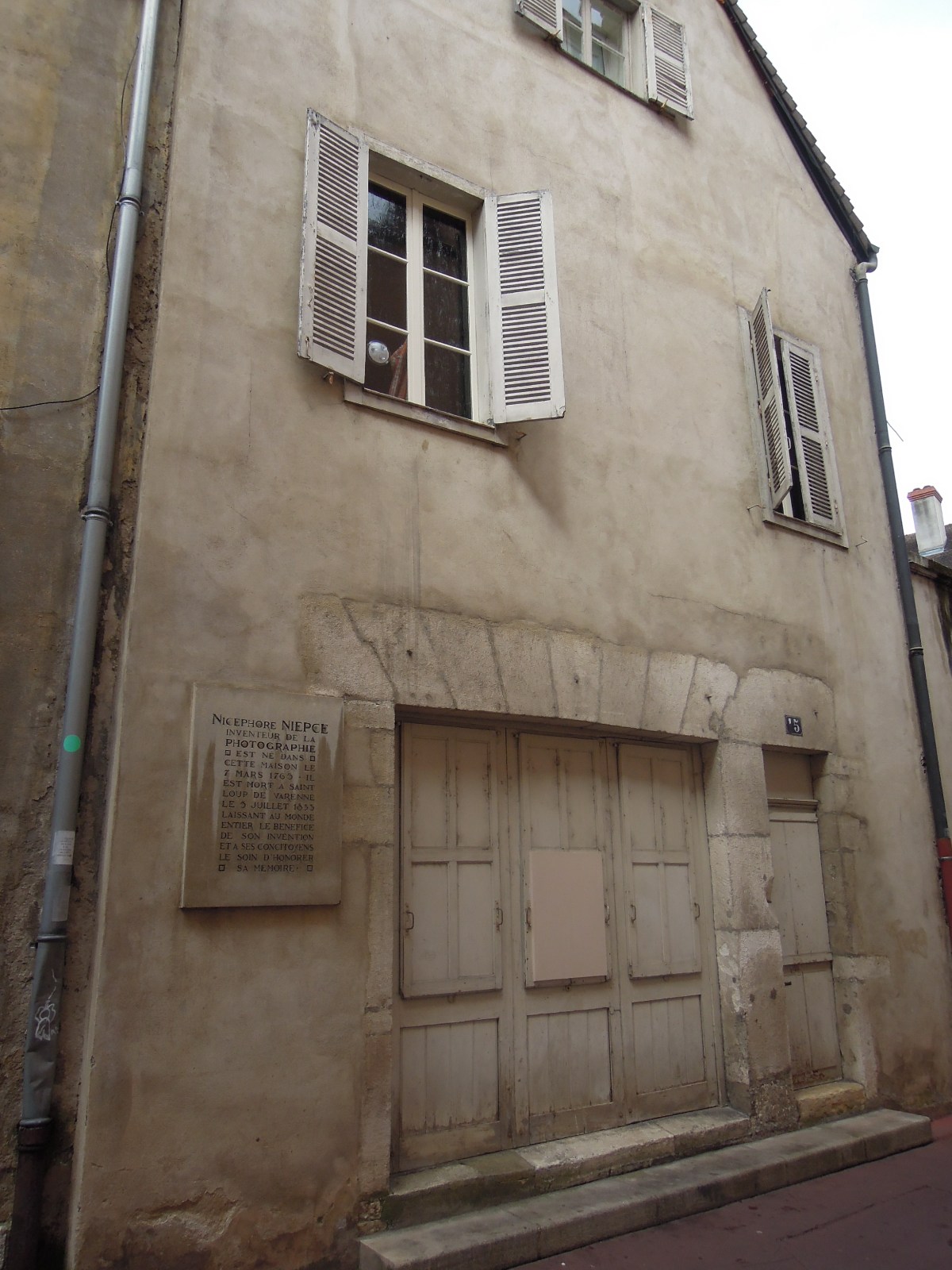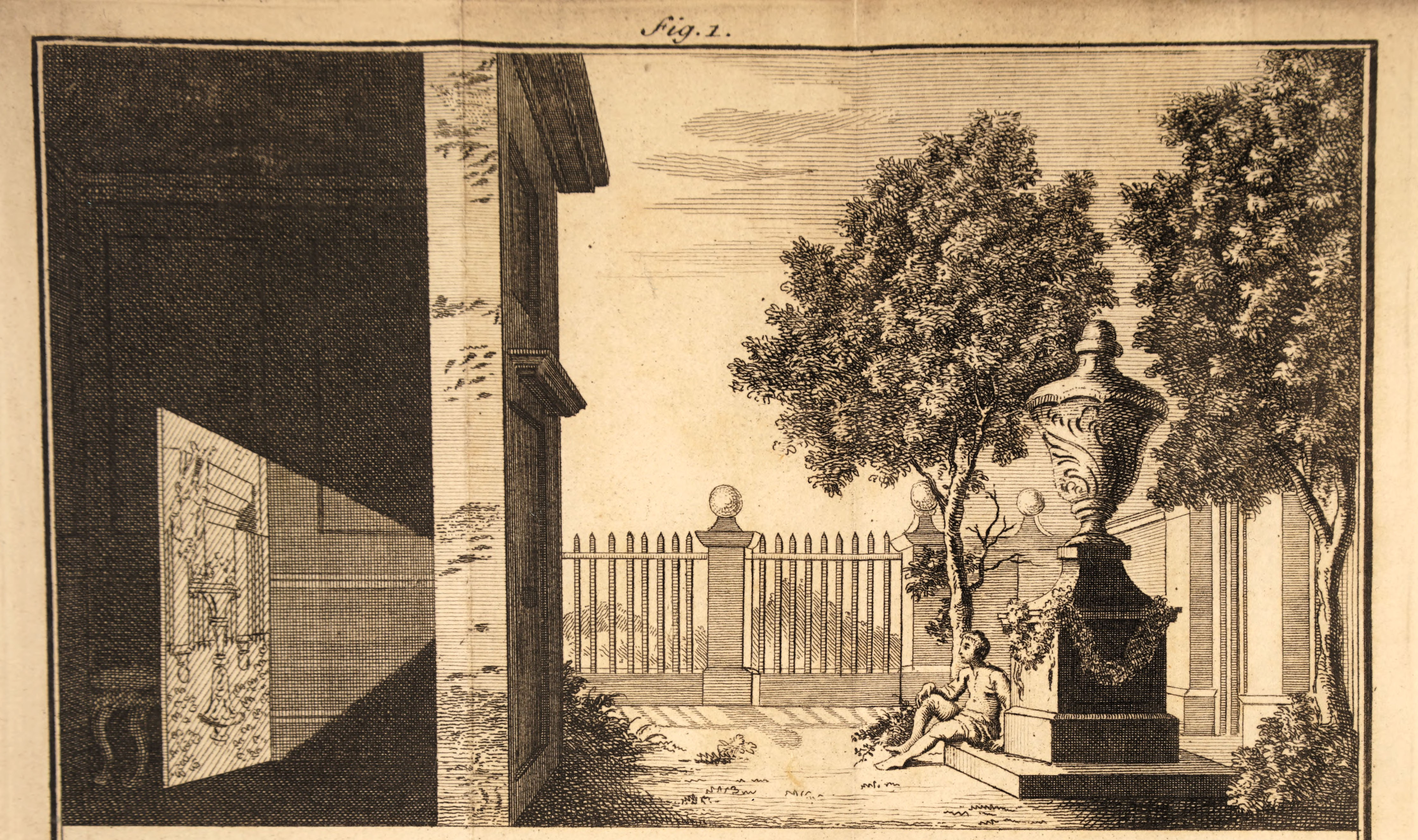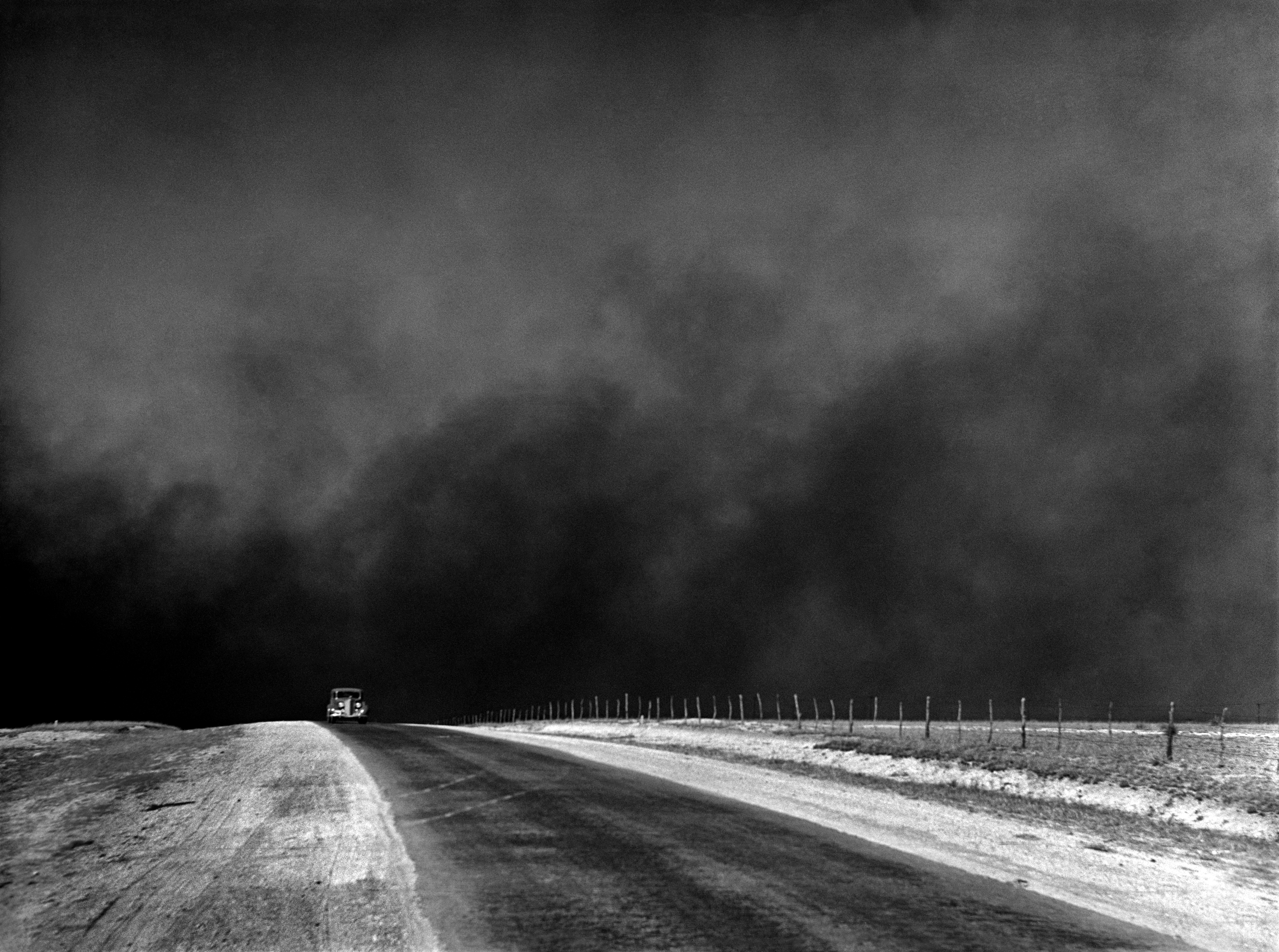|
Heliography
Heliography (in French, ''héliographie)'' from ''helios'' (Greek: ''ἥλιος'')'','' meaning "sun"'','' and ''graphein (γράφειν),'' "writing") is the photographic process invented, and named thus, by Joseph Nicéphore Niépce around 1822, which he used to make the earliest known surviving photograph from nature, ''View from the Window at Le Gras'' (1826 or 1827), and the first realisation of photoresist as means to reproduce artworks through inventions of photolithography and photogravure. Invention Nicéphore Niépce began experiments with the aim of achieving a photo-etched printmaking technique in 1811. He knew that the acid-resistant Bitumen of Judea used in etching hardened with exposure to light. In experiments he coated it on plates of glass, zinc, copper and silver-surfaced copper, pewter and limestone (lithography), and found the surface exposed to the most light resisted dissolution in oil of lavender and petroleum, so that the uncoated shadow areas mig ... [...More Info...] [...Related Items...] OR: [Wikipedia] [Google] [Baidu] |
Daguerreotype
Daguerreotype (; french: daguerréotype) was the first publicly available photographic process; it was widely used during the 1840s and 1850s. "Daguerreotype" also refers to an image created through this process. Invented by Louis Daguerre and introduced worldwide in 1839, the daguerreotype was almost completely superseded by 1860 with new, less expensive processes, such as ambrotype ( collodion process), that yield more readily viewable images. There has been a revival of the daguerreotype since the late 20th century by a small number of photographers interested in making artistic use of early photographic processes. To make the image, a daguerreotypist polished a sheet of silver-plated copper to a mirror finish; treated it with fumes that made its surface light-sensitive; exposed it in a camera for as long as was judged to be necessary, which could be as little as a few seconds for brightly sunlit subjects or much longer with less intense lighting; made the resulting lat ... [...More Info...] [...Related Items...] OR: [Wikipedia] [Google] [Baidu] |
Nicéphore Niépce
Joseph Nicéphore Niépce (; 7 March 1765 – 5 July 1833), commonly known or referred to simply as Nicéphore Niépce, was a French inventor, usually credited with the invention of photography. Niépce developed heliography, a technique he used to create the world's oldest surviving product of a photographic process: a print made from a photoengraved printing plate in 1825. In 1826 or 1827, he used a primitive camera to produce the oldest surviving photograph of a real-world scene. Among Niépce's other inventions was the Pyréolophore, one of the world's first internal combustion engines, which he conceived, created, and developed with his older brother Claude Niépce. Biography Early life Niépce was born in Chalon-sur-Saône, Saône-et-Loire, where his father was a wealthy lawyer. His older brother Claude (1763–1828) was also his collaborator in research and invention, but died half-mad and destitute in England, having squandered the family wealth in pursuit of n ... [...More Info...] [...Related Items...] OR: [Wikipedia] [Google] [Baidu] |
Photography
Photography is the art, application, and practice of creating durable images by recording light, either electronically by means of an image sensor, or chemically by means of a light-sensitive material such as photographic film. It is employed in many fields of science, manufacturing (e.g., photolithography), and business, as well as its more direct uses for art, film and video production, recreational purposes, hobby, and mass communication. Typically, a lens is used to focus the light reflected or emitted from objects into a real image on the light-sensitive surface inside a camera during a timed exposure. With an electronic image sensor, this produces an electrical charge at each pixel, which is electronically processed and stored in a digital image file for subsequent display or processing. The result with photographic emulsion is an invisible latent image, which is later chemically "developed" into a visible image, either negative or positive, depending on the purp ... [...More Info...] [...Related Items...] OR: [Wikipedia] [Google] [Baidu] |
Physautotype
The physautotype (from French, ''physautotype'') was a photographic process, invented in the course of his investigation of heliography, by Joseph Nicéphore Niépce and Louis Jacques Mandé Daguerre in 1832, in which images were produced by the use of lavender oil residue dissolved in alcohol as the photographic agent. The solution was coated onto a silver or glass plate and allowed to dry, after which it had a powdery white appearance. The plate was then exposed in a camera obscura for about 8 hours and developed with petroleum-based spirit vapors, which caused the least strongly exposed areas to become proportionally more transparent, creating a photographic image that was positive when viewed against a darker background. Brief history On his way to England, Niépce met in Paris with Louis Daguerre, who had a reputation as camera obscura specialist. Hoping to shorten the exposure time of his bitumen process, Niépce decided in 1829, to associate Daguerre to his research. This a ... [...More Info...] [...Related Items...] OR: [Wikipedia] [Google] [Baidu] |
View From The Window At Le Gras
''View from the Window at Le Gras'' is a heliographic image and the oldest surviving camera photograph. It was created by French inventor Nicéphore Niépce in 1827 in Saint-Loup-de-Varennes, France, and shows parts of the buildings and surrounding countryside of his estate, '' Le Gras'', as seen from a high window. Creation Niépce captured the scene with a camera obscura projected onto a pewter plate thinly coated with bitumen of Judea, a naturally occurring asphalt. The bitumen hardened in the brightly lit areas, but in the dimly lit areas it remained soluble and could be washed away with a mixture of oil of lavender and white petroleum. A very long exposure in the camera was required. Sunlight strikes the buildings on opposite sides, suggesting an exposure that lasted about eight hours, which has become the traditional estimate. A researcher who studied Niépce's notes and recreated his processes found that the exposure must have continued for several days. Early histor ... [...More Info...] [...Related Items...] OR: [Wikipedia] [Google] [Baidu] |
View From The Window At Le Gras, By Joseph Nicephore Niepce, 1826 Or 1827, France - Harry Ransom Center - University Of Texas At Austin - DSC08424
A view is a sight or prospect or the ability to see or be seen from a particular place. View, views or Views may also refer to: Common meanings * View (Buddhism), a charged interpretation of experience which intensely shapes and affects thought, sensation, and action * Graphical projection in a technical drawing or schematic ** Multiview orthographic projection, standardizing 2D images to represent a 3D object * Opinion, a belief about subjective matters * Page view, a visit to a World Wide Web page * Panorama, a wide-angle view * Scenic viewpoint, an elevated location where people can view scenery * World view, the fundamental cognitive orientation of an individual or society encompassing the entirety of the individual or society's knowledge and point-of-view Places * View, Kentucky, an unincorporated community in Crittenden County * View, Texas, an unincorporated community in Taylor County Arts, entertainment, and media Music * ''View'' (album), the 2003 debut album by ... [...More Info...] [...Related Items...] OR: [Wikipedia] [Google] [Baidu] |
Camera Obscura
A camera obscura (; ) is a darkened room with a aperture, small hole or lens at one side through which an image is 3D projection, projected onto a wall or table opposite the hole. ''Camera obscura'' can also refer to analogous constructions such as a box or tent in which an exterior image is projected inside. Camera obscuras with a lens in the opening have been used since the second half of the 16th century and became popular as aids for drawing and painting. The concept was developed further into the photographic camera in the first half of the 19th century, when camera obscura boxes were used to exposure (photography), expose photosensitivity, light-sensitive materials to the projected image. The camera obscura was used to study eclipses without the risk of damaging the eyes by looking directly into the sun. As a drawing aid, it allowed tracing the projected image to produce a highly accurate representation, and was especially appreciated as an easy way to achieve proper grap ... [...More Info...] [...Related Items...] OR: [Wikipedia] [Google] [Baidu] |
Helmut Gernsheim
Helmut Erich Robert Kuno Gernsheim (1 March 1913 – 20 July 1995) was a historian of photography, a collector and a photographer. Early life and education Born in Munich, Germany, he was the third son of the academic librarian Karl Gernsheim and his wife Hermine Scholz. He studied art history at the Ludwig Maximilian University of Munich. He took up photography in 1934 at the urging of his brother, :de:Walter Gernsheim, who thought it a more practical profession for someone from a partially Jewish background who intended to leave Nazi Germany. He graduated from the State School of Photography, Munich, after two years' study. Beginning in the late 1930s, he made commercial work, some in colour using the German Uvachrome process, before going to Paris for an exhibition of his work and then to London to work on commissions from the National Gallery, for Rolls-Royce and the shipping line P&O. Second World War At the outset of the Second World War, Gernsheim was deported to Aus ... [...More Info...] [...Related Items...] OR: [Wikipedia] [Google] [Baidu] |
Negative (photography)
In photography, a negative is an image, usually on a strip or sheet of transparent plastic film, in which the lightest areas of the photographed subject appear darkest and the darkest areas appear lightest. This reversed order occurs because the extremely light-sensitive chemicals a camera film must use to capture an image quickly enough for ordinary picture-taking are darkened, rather than bleached, by exposure to light and subsequent photographic processing. In the case of color negatives, the colors are also reversed into their respective complementary colors. Typical color negatives have an overall dull orange tint due to an automatic color-masking feature that ultimately results in improved color reproduction. Negatives are normally used to make positive prints on photographic paper by projecting the negative onto the paper with a photographic enlarger or making a contact print. The paper is also darkened in proportion to its exposure to light, so a second reversal result ... [...More Info...] [...Related Items...] OR: [Wikipedia] [Google] [Baidu] |
Nicéphore Niépce Oldest Photograph 1825
Nicéphore may refer to: *Nicéphore Niépce (1765–1833), French inventor, most noted as the inventor of photography and a pioneer in the field *Nicéphore Soglo (born 1934), Beninese politician who was Prime Minister of Benin 1990–1991 and President 1991–1996 *St-Nicéphore, Quebec, former municipality that has become a sector of Drummondville in the Centre-du-Québec region of Quebec See also *Nikephoros (other) {{disambiguation ... [...More Info...] [...Related Items...] OR: [Wikipedia] [Google] [Baidu] |
Polycyclic Aromatic Hydrocarbon
A polycyclic aromatic hydrocarbon (PAH) is a class of organic compounds that is composed of multiple aromatic rings. The simplest representative is naphthalene, having two aromatic rings and the three-ring compounds anthracene and phenanthrene. PAHs are uncharged, non-polar and planar. Many are colorless. Many of them are found in coal and in oil deposits, and are also produced by the combustion of organic matter—for example, in engines and incinerators or when biomass burns in forest fires. Polycyclic aromatic hydrocarbons are discussed as possible starting materials for abiotic syntheses of materials required by the earliest forms of life. Nomenclature and structure The terms polyaromatic hydrocarbon or polynuclear aromatic hydrocarbon are also used for this concept. By definition, polycyclic aromatic hydrocarbons have multiple rings, precluding benzene from being considered a PAH. Some sources, such as the US EPA and CDC, consider naphthalene to be the simplest PAH. ... [...More Info...] [...Related Items...] OR: [Wikipedia] [Google] [Baidu] |
Photoengraving
Photoengraving is a process that uses a light-sensitive photoresist applied to the surface to be engraved to create a mask that protects some areas during a subsequent operation which etches, dissolves, or otherwise removes some or all of the material from the unshielded areas of a substrate. Normally applied to metal, it can also be used on glass, plastic and other materials. A photoresist is selected which is resistant to the particular acid or other etching compound to be used. It may be a liquid applied by brushing, spraying, pouring or other means and then allowed to set, or it may come in sheet form and be applied by laminating. It is then exposed to light—usually strong ultraviolet (UV) light—through a photographic, mechanically printed, or manually created image or pattern on transparent film. Alternatively, a lens may be used to project an image directly onto it. Typically, the photoresist is hardened where it receives sufficient exposure to light, but some photoresis ... [...More Info...] [...Related Items...] OR: [Wikipedia] [Google] [Baidu] |








